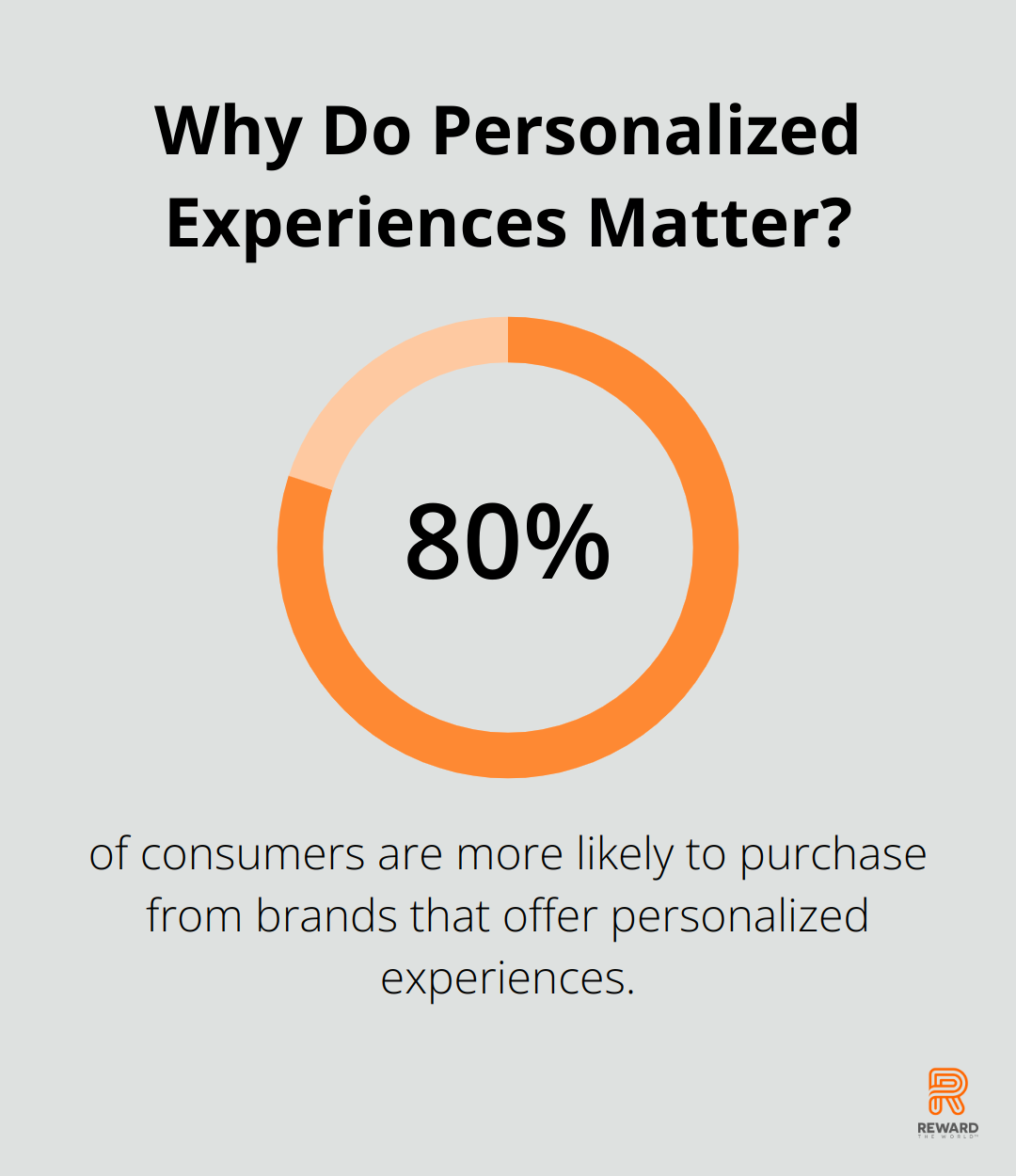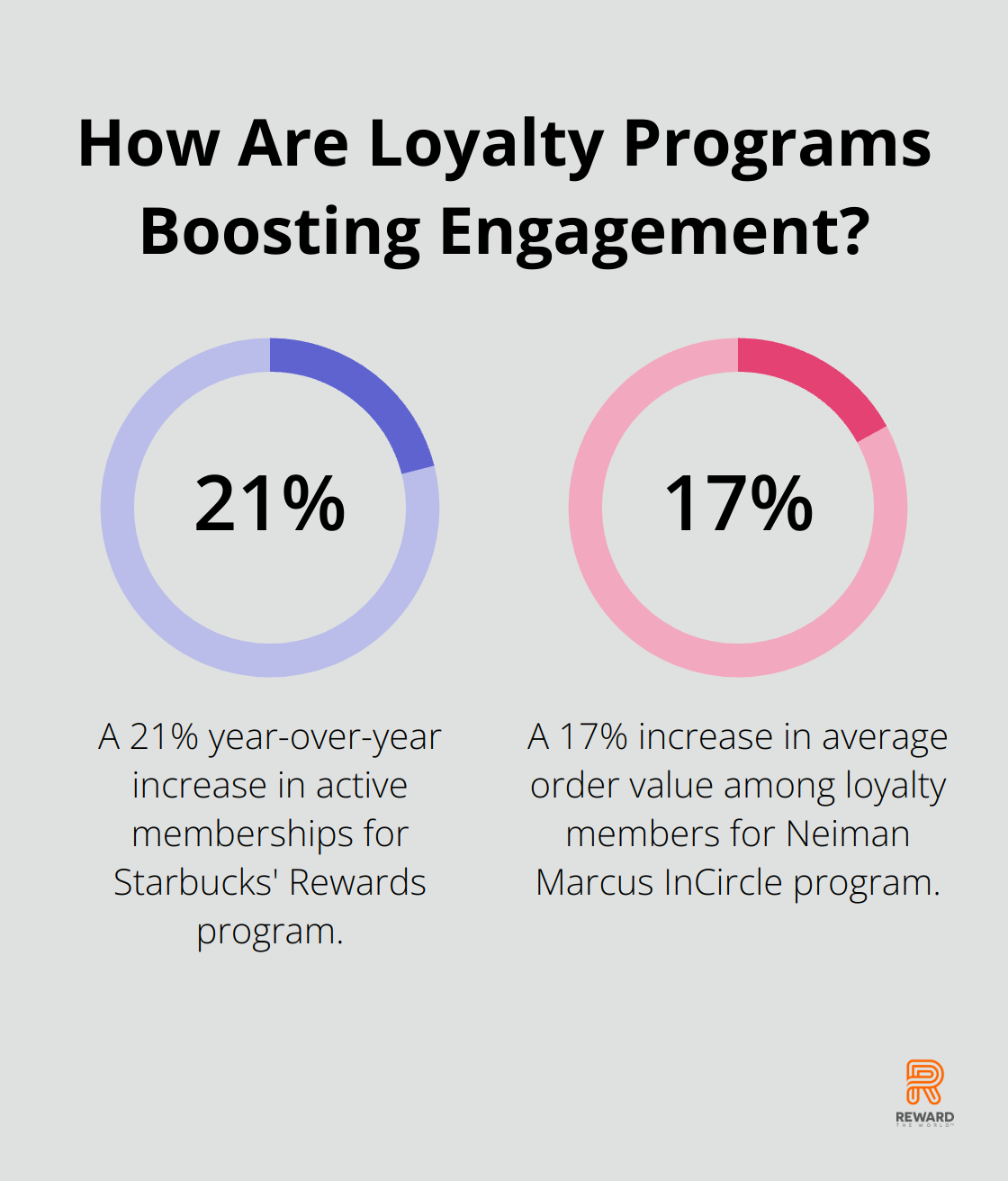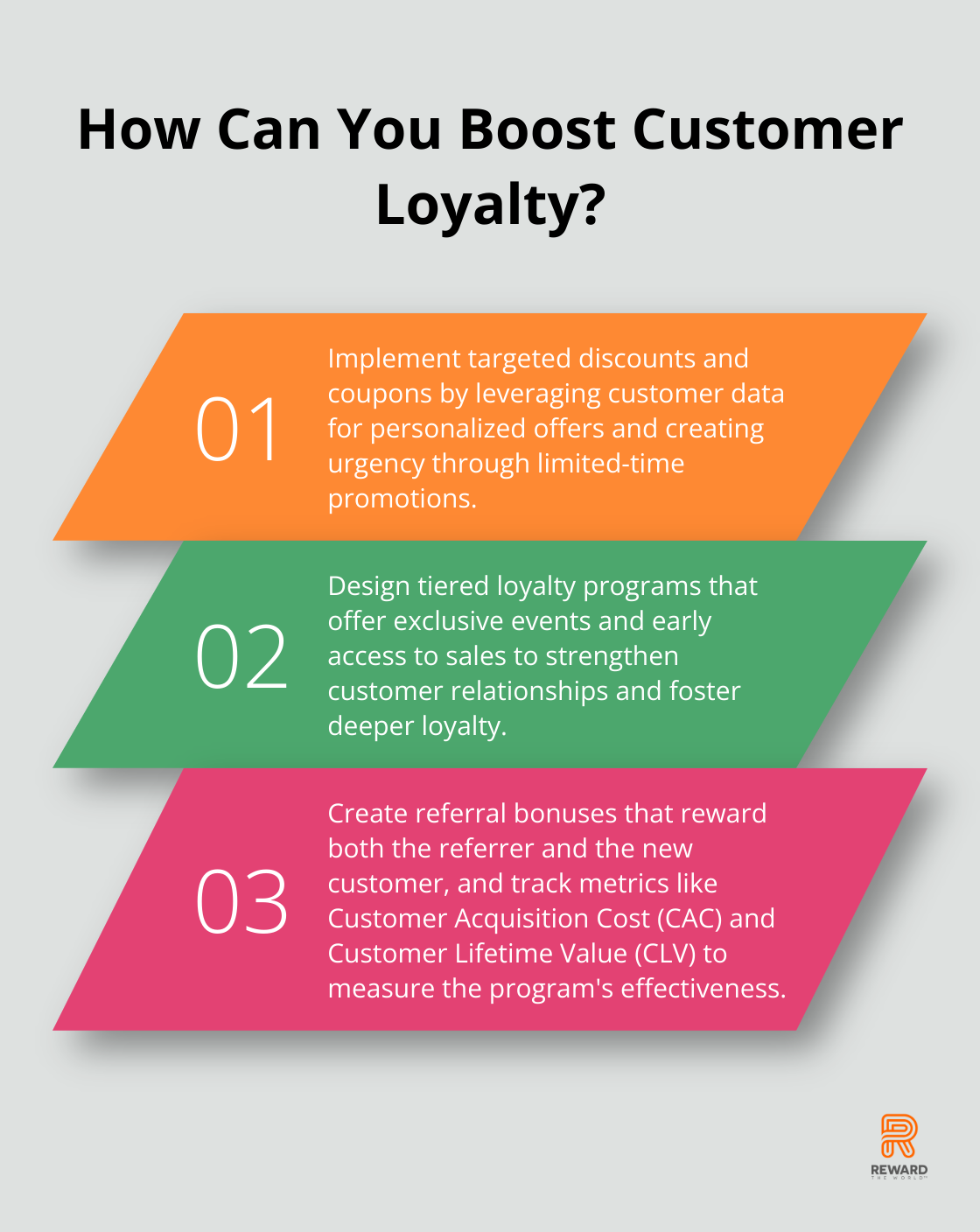
Customer incentive programs are a powerful way to enhance engagement and boost loyalty.
We at Reward the World are committed to sharing effective methods such as discounts, loyalty programs, and referral bonuses.
Dive into the benefits and learn how to measure the success of your own incentive strategies with this Customer Incentive Methods: Explained article
Which Incentives Work Best
Discounts and coupons are time-tested methods to attract customers. Businesses that implement these strategies see immediate results—60% of shoppers use coupons within a week. Offering limited-time discounts can create urgency and drive quick sales. Ensure these promotions are well-targeted, leveraging customer data to personalize offers. Seasonal discounting is a powerful tool, with 68% of U.S. shoppers planning to shop online during Black Friday sales.
Utilizing Loyalty Programs Effectively
Loyalty programs aren’t just about points; they’re about creating a relationship. The top performing loyalty programs boost revenue from customers who use them by 15-25% annually. To maximize effectiveness, programs should include tiered rewards. 30 out of the top 101 global loyalty programs use tiered structures, and they attract customers who pay for enhanced tiers. Offering exclusive events, such as early access to sales, recognizes and rewards loyal customers, strengthening their commitment.
Driving Growth with Referral Bonuses
Referral bonuses tap into the power of word-of-mouth marketing. Nielsen reports that 92% of consumers trust recommendations from friends and family over advertising. Effective referral programs incentivize both the referrer and the new customer, creating a win-win situation. Brands like Dropbox used this strategy to skyrocket their user base. Measuring success is critical—track metrics like Customer Acquisition Cost and Customer Lifetime Value to ensure the program delivers desired results.

What Are the Benefits?
Incentive programs have clear, measurable benefits that can transform customer relationships and drive significant business growth. Focusing on retention, enhancing customer experience, and boosting sales and revenue are key outcomes of well-implemented incentive strategies.
Increased Customer Retention
Customer incentive programs are a proven method to keep customers coming back. These programs reward repeat customers, creating a sense of loyalty and connection. Tiered loyalty programs are particularly effective—most customers (54.7%) are loyal to only 1 to 5 brands. By offering points, exclusive discounts, or early access to products, businesses can foster a strong emotional bond with their customers.
Enhanced Customer Experience
An exceptional customer experience, tailored through personalized incentive programs, can significantly influence loyalty and satisfaction. For example, 80% of consumers are more likely to purchase from brands that offer personalized experiences. Implementing customer incentives such as VIP events, special access to new products, or bespoke rewards can make customers feel valued and understood. Gamification, where customers earn rewards through interactive challenges, can also enhance engagement. Such methods not only improve the overall customer journey but also provide valuable insights into consumer preferences, helping to refine future marketing efforts.
Boost in Sales and Revenue
The impact of customer incentives on sales and revenue is significant. Data shows that loyalty program members generate between 12% and 18% more revenue for retailers than non-members. These programs encourage higher spending and more frequent purchases. For instance, businesses that use cashback offers often see a substantial increase in average order value. Additionally, seasonal promotions aligned with customer incentive strategies can lead to a notable spike in sales; during major sales events like Black Friday, businesses can capitalize on exclusive discounts to drive urgency and boost short-term revenue.

Effective customer incentive programs not only retain existing customers but also attract new ones by offering compelling reasons to choose your brand. This dual impact ensures sustained growth and competitive advantage in the marketplace.
How to Measure Incentive Program Success
Understanding the success of customer incentive programs is essential for businesses aiming to maximize their return on investment. Proper measurement allows you to refine strategies and achieve better results. Here are practical steps and tools to effectively measure the success of your incentive programs.
Key Performance Indicators (KPIs) to Track
Tracking the right KPIs is crucial to evaluate the performance of your incentive programs. One important metric is Customer Lifetime Value (CLV). This metric helps determine the total revenue a business can expect from a single customer account. Higher CLV indicates successful incentive programs that foster customer loyalty and repeat purchases. Another essential KPI is Monthly Recurring Revenue (MRR), particularly for subscription services, as it reflects the revenue generated from ongoing subscriptions.

The Net Promoter Score (NPS) measures customer satisfaction and loyalty by asking how likely customers are to recommend your business to others. A high NPS can indicate the effectiveness of your incentive programs in building strong customer relationships. Monitoring the Customer Churn Rate is also critical. This metric shows the percentage of customers who stop doing business with your company over a specific period and helps identify areas needing improvement.
Tools and Software for Measurement
Utilizing the right tools and software can streamline the process of tracking and analyzing KPIs. Customer Relationship Management (CRM) systems like Salesforce offer robust features for managing and measuring customer interactions and loyalty program data. These systems can generate detailed reports on customer behavior and the impact of incentive programs.
For detailed analytics and insights, Google Analytics provides valuable data on customer interactions and conversion rates. You can set up goals and track the performance of specific incentive campaigns. Additionally, loyalty program software such as Loylogic or Antavo can help manage points, rewards, and customer engagement, providing comprehensive analytics on program effectiveness.
Real-World Examples of Successful Programs
Several companies have successfully implemented incentive programs, showcasing the impact of well-measured strategies. For example, Starbucks’ Rewards program has significantly boosted customer loyalty and engagement. By offering points for each purchase, Starbucks encourages repeat business. Their tailored rewards and seamless mobile integration have led to a 21% year-over-year increase in active memberships.
Another notable example is the Neiman Marcus InCircle program, which uses tiered rewards to incentivize high spending. Customers earn exclusive benefits at different tiers, from personal shopping services to unique event invitations. This approach has resulted in a 17% increase in average order value among loyalty members.
In tech, Dropbox’s referral bonus program is a prime example of leveraging word-of-mouth marketing effectively. By offering additional storage space for referrals, Dropbox managed to attain 3900% user growth. This success was continuously measured and optimized through metrics like Customer Acquisition Cost (CAC) and referral rates.
Measuring the success of customer incentive programs involves a combination of tracking relevant KPIs, using sophisticated tools and software, and analyzing real-world examples to refine and enhance your strategies. This approach ensures that your incentive programs deliver tangible results and contribute to long-term business growth.
Conclusion
Customer incentive methods like discounts, loyalty programs, and referral bonuses are effective tools for boosting engagement and loyalty. Discounts and coupons attract immediate customer interest and drive sales, while loyalty programs create long-term relationships that enhance revenue by 15-25% annually. Referral bonuses leverage word-of-mouth marketing, a highly trusted source of information, to expand customer bases quickly.

Tracking the success of these programs is vital. Key performance indicators such as Customer Lifetime Value, Monthly Recurring Revenue, and Net Promoter Score provide insights into their effectiveness. Tools like CRM systems and Google Analytics help monitor and refine incentive strategies, ensuring they deliver optimal results.
Implementing effective customer incentive programs can transform your business by fostering loyalty, enhancing customer experiences, and driving sales. For more comprehensive solutions to elevate your incentive strategies, explore Reward the World. Our platform supports businesses worldwide with a wide range of rewards and robust analytics, making it an ideal choice for driving customer engagement and achieving business growth.
We hope this Customer Incentive Methods: Explained article was useful.
